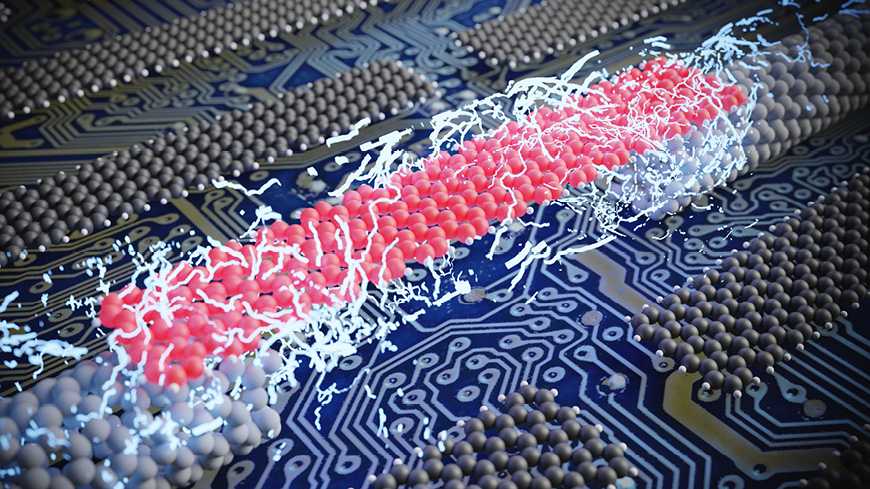Prof. Mickael Perrin: Carbon-based quantum technology
Researchers around EMPA Professor Mickael Perrin, Assistant Professor of Low-dimensional Quantum Electronics at D-ITET, have succeeded in attaching electrodes to individual atomically precise nanoribbons, paving the way for precise characterization of the fascinating ribbons and their possible use in quantum technology.

Quantum technology holds promise but also complexity. In the upcoming decades, it's anticipated to yield breakthroughs: smaller, precise sensors, secure communication networks, and potent computers aiding drug development, market control, and swift weather prediction.
To achieve this, we require quantum materials, exemplified by graphene. This two-dimensional carbon structure possesses unique traits: exceptional tensile strength, conductivity, and specific quantum effects. Further constraining it, like into ribbon shapes, introduces controllable quantum effects.
Mickael Perrin's team exploits this. For years, scientists at Empa's Nanoscale Interfaces lab, led by Michel Calame, have studied graphene nanoribbons under Perrin. "Graphene nanoribbons, even more captivating than graphene," Perrin notes. "Adjusting length, width, edges, and adding atoms imparts varied electrical, magnetic, and optical properties."